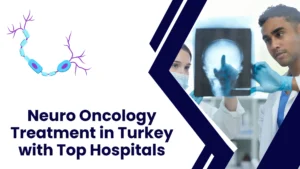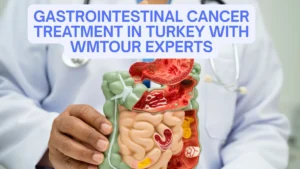Heart Bypass Surgery Guide 2025: Your Complete Guide to CABG
Understand the latest techniques, costs, and recovery for a life-changing procedure.
This **Heart Bypass Surgery Guide** is a comprehensive resource for patients considering their options in 2025. Cardiovascular disease remains a leading health concern worldwide, but thankfully, this procedure continues to offer a life-saving solution. This complex yet routine surgery can restore blood flow to the heart, alleviating symptoms and improving a patient’s quality of life. As medical science advances, so do the techniques and outcomes for a **Coronary Artery Bypass Graft (CABG)**. This guide, therefore, explores everything you need to know about heart bypass surgery, from understanding the procedure to planning your recovery journey. We also provide essential information for international patients, highlighting why medical travel can be a valuable option.
What Is Heart Bypass Surgery?
Heart bypass surgery, or CABG, is a surgical procedure designed to restore blood flow to the heart muscle. When a coronary artery becomes blocked or narrowed due to plaque buildup (a condition known as atherosclerosis), blood flow is restricted. This can lead to severe chest pain (angina) or a heart attack. The surgeon, therefore, creates a “bypass” by taking a healthy blood vessel from another part of the body—such as the chest, leg, or arm—and grafting it to the blocked artery.
Consequently, this new pathway allows blood to flow freely, bypassing the blockage and supplying oxygen-rich blood to the heart. In fact, this heart bypass surgery can significantly reduce symptoms and extend a patient’s life.
Key Facts About CABG
Historically, a **Coronary Artery Bypass Graft** has been a major open-heart surgery. Today, however, many surgeons perform it using modern, less invasive techniques. The most common form of bypass surgery involves stopping the heart and using a heart-lung machine to maintain blood circulation. This is known as “on-pump” surgery. Alternatively, some modern approaches allow for “off-pump” or “beating-heart” surgery, where the heart continues to beat during the procedure. This can reduce some of the risks associated with the heart-lung machine.
Furthermore, the number of blocked arteries determines the name of the procedure, for instance, a double, triple, or quadruple bypass. A well-known organization for heart and vascular health, the Cleveland Clinic, provides detailed insights into these procedures and their benefits.
The Cost of Heart Bypass Surgery in 2025
The cost of heart bypass surgery varies dramatically across the globe. Factors such as the country, the hospital’s reputation, the surgeon’s experience, and the specific technique used all influence the final price. In countries with high healthcare costs, like the United States or Western Europe, the procedure can be prohibitively expensive, often ranging from $75,000 to over $150,000.
In contrast, emerging medical tourism destinations offer the same high-quality care for a fraction of the cost. For instance, countries like Iran and Turkey have become global leaders in providing world-class cardiac surgery at highly competitive prices. This cost-effectiveness, in addition to the availability of top-tier medical professionals, makes these regions a popular choice for international patients. Consequently, many patients find that a medical trip, including all travel and accommodation costs, is still significantly cheaper than the surgery in their home country. To get the most accurate cost estimate, it is always recommended to get a personalized consultation from a trusted medical tourism portal like wmedtour.com.
Choosing a Hospital and Surgeon for Your CABG
For international patients, choosing the right hospital and surgeon is perhaps the most important decision. You should, therefore, seek a facility with a strong reputation for cardiac care, equipped with the latest technology. For example, look for hospitals that are accredited by international organizations and have a dedicated cardiology department. Likewise, the surgeon’s experience is paramount.
A surgeon who has performed a high volume of CABG procedures is more likely to provide a better outcome. Similarly, it’s wise to research the surgeon’s credentials, patient testimonials, and professional affiliations. A reputable medical tourism portal can greatly simplify this process by connecting you with vetted surgeons and top hospitals in your chosen destination. In fact, many of the world’s leading cardiac centers now cater specifically to international patients, offering comprehensive packages that include everything from airport transfers to post-operative care. Therefore, finding the right team is easier than ever.
Top Global Destinations for CABG
While I cannot name specific individuals or hospitals without live data, I can confirm that top-tier cardiac care is available globally. Notably, major medical hubs in Iran, Turkey, India, and Thailand have become renowned for their expertise in heart bypass surgery. Their success is built on a combination of highly skilled surgeons, state-of-the-art facilities, and lower operational costs. Moreover, many of these hospitals are staffed with multilingual teams, making the experience seamless for international visitors. Before making a choice, it is always best to consult with a professional and review independent rankings and patient reviews. For instance, sites like the Medical Tourism Association offer valuable resources for making an informed decision about where to seek treatment abroad.
Modern Techniques in Heart Bypass Surgery
The field of cardiovascular surgery is constantly evolving. As a result, new techniques aim to make the procedure safer and recovery faster. The most significant advancement is the move towards less invasive methods. For example, some surgeons use smaller incisions between the ribs rather than a large incision down the breastbone. This approach, known as Minimally Invasive Direct Coronary Artery Bypass (MIDCAB), can lead to less pain, a shorter hospital stay, and a faster return to daily activities.
Another innovation is the use of robotic-assisted surgery, which provides surgeons with a higher degree of precision and control. In addition, surgeons are increasingly using arterial grafts (like the internal mammary artery) over vein grafts from the leg, because arteries have a higher long-term patency rate. These modern techniques, however, are not suitable for all patients. Therefore, your surgeon will determine the best approach based on your specific condition. The National Center for Biotechnology Information (NCBI) publishes numerous studies on the efficacy of these modern techniques.
How to Prepare for Heart Bypass Surgery
Your Step-by-Step Guide to Preparing for CABG
Preparation is key to a successful surgery and a smooth recovery. Following your doctor’s instructions meticulously is essential. Consequently, this guide outlines the typical steps you will take to prepare for your procedure.
- Step 1: Medical Evaluation and Tests. Your surgeon will conduct a full physical examination and order several tests. These tests include blood work, an electrocardiogram (ECG), a chest X-ray, and an angiogram. These tests help your doctor assess your overall health and plan the surgery effectively.
- Step 2: Medication Review. You must inform your doctor about all medications, supplements, and vitamins you are taking. You will likely be instructed to stop taking certain medications, especially blood thinners, several days before the surgery to reduce the risk of bleeding.
- Step 3: Lifestyle Adjustments. Your doctor will advise you to stop smoking and limit alcohol consumption well in advance of the surgery. Regular light exercise, such as walking, can also improve your overall health and aid in a faster recovery.
- Step 4: Pre-operative Instructions. You will receive specific instructions regarding what to eat and drink before the surgery. You will be told to fast for a certain number of hours before the procedure. It is crucial to follow these instructions precisely to avoid complications.
Post-Procedure Recovery and Rehabilitation
The recovery process after heart bypass surgery is a gradual one that requires patience and dedication. Immediately after the surgery, you will be taken to the intensive care unit (ICU) for close monitoring. You will likely have a breathing tube for a few hours. Within a day or two, you will be moved to a regular hospital room. The typical hospital stay is between 5 and 7 days. Once you are home, it is important to follow all of your surgeon’s aftercare instructions.
Consequently, you must care for your incision sites, take all prescribed medications, and engage in light physical activity as advised by your doctor. Your recovery will also involve a cardiac rehabilitation program, which includes supervised exercise, nutritional counseling, and stress management. As a matter of fact, organizations like the American Heart Association offer excellent resources to support your recovery journey. The full recovery period can take several months, but with proper care and support, most patients make a full return to their normal lives.
Important Questions to Ask Your Doctor About Your Heart Bypass Surgery
Before undergoing any major surgery, it’s vital to have a clear understanding of the procedure and what to expect. Asking the right questions can help alleviate anxiety and ensure you are fully informed. For instance, you should ask about the specific type of CABG procedure your surgeon recommends and why. In addition, you should inquire about the surgeon’s experience with that particular technique.
Furthermore, you should ask about the potential risks and complications and what measures the surgical team takes to mitigate them. Finally, it’s a good idea to ask about the expected recovery timeline, including when you can return to work and resume physical activities. A reputable surgeon will welcome these questions and provide clear, detailed answers. WMedtour.com can connect you with surgeons who prioritize patient education and transparency. By all means, do not hesitate to ask as many questions as you need about your **heart bypass surgery**.
CABG vs. Angioplasty: A Comparison
When you are diagnosed with a blocked coronary artery, you might be presented with two main treatment options: a **Coronary Artery Bypass Graft** (CABG) or a Coronary Angioplasty with Stent Placement. Both procedures aim to restore blood flow to the heart, but they use different methods. Angioplasty is a less invasive procedure where a catheter is used to inflate a small balloon inside the blocked artery, widening it. A stent—a small mesh tube—is then left in place to keep the artery open. This procedure is often suitable for a single, isolated blockage.
By contrast, CABG is a surgical option generally recommended for multiple blockages or for blockages that are not suitable for stenting. It provides a more durable solution, especially for complex cases. However, a major difference is the recovery time. Angioplasty patients typically go home the next day, whereas CABG requires a longer hospital stay and recovery period. Your cardiologist will help you determine which procedure is best for your specific condition based on the location and severity of your blockages. For more information, you can find a comparison table below. The Mayo Clinic provides excellent details on both procedures.
| Feature | Heart Bypass Surgery (CABG) | Coronary Angioplasty with Stent |
|---|---|---|
| Procedure Type | Major surgery (open-heart or minimally invasive) | Non-surgical, catheter-based procedure |
| Indications | Multiple blockages, severe blockages, or blockages not suitable for stents | Single or few blockages, less severe disease |
| Durability | More durable, long-term solution | Less durable, may require repeat procedures |
| Recovery Time | Longer (5-7 days hospital stay, several weeks to months for full recovery) | Shorter (overnight hospital stay, a few days for full recovery) |
| Cost | Generally more expensive due to surgical complexity | Generally less expensive |
Your Journey to a Healthy Heart Starts Here
Choosing the right path for heart bypass surgery is a significant decision. To ensure you receive the best care from a top-tier hospital and surgeon, you should consider a professional medical tourism portal. Consequently, we recommend visiting wmedtour.com. Our team of experts is ready to guide you through a seamless, stress-free experience, from initial consultation to post-operative care.
Related Articles You Might Find Useful:
- Heart Valve Replacement Cost: A Detailed Guide for 2025
- Pacemaker Surgery: What to Expect and How to Prepare
- Cardiac Rehabilitation Programs Abroad: Your Path to Full Recovery
- Why Iran is a Top Destination for Cardiology and Cardiac Services
- Minimally Invasive Heart Surgery: Benefits and Techniques
- Arrhythmia Treatment: Latest Options for a Healthy Heartbeat
- Congenital Heart Defect Surgery: A Guide for Pediatric and Adult Patients
- Coronary Angiography Procedure: What You Need to Know
- Stroke Prevention: A Comprehensive Guide to Reducing Your Risk
- Heart Transplant FAQ: Answering Your Most Important Questions




